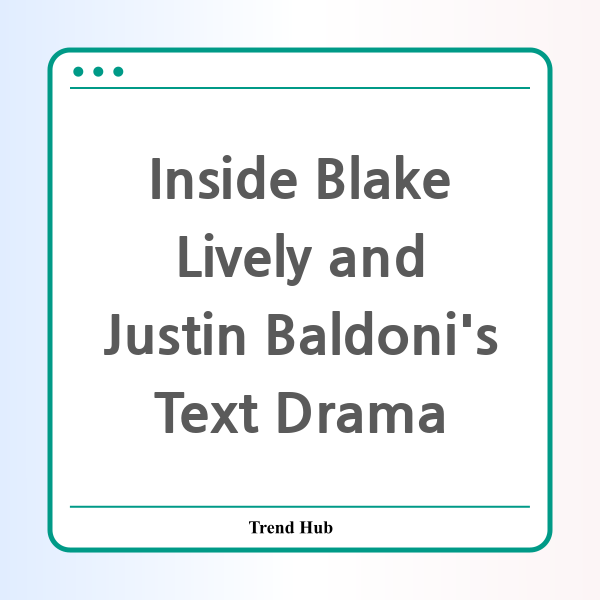* This website participates in the Amazon Affiliate Program and earns from qualifying purchases.

What happens when Hollywood glamour meets on-set turmoil? The recent legal battle between Blake Lively and Justin Baldoni has revealed a dramatic side to celebrity life that many might not expect. Not only does it expose alleged lies and threats, but it also gives us a glimpse into the personal side of their working relationship through text messages that paint a vivid picture of their collaboration on the film "It Ends With Us".
As the feud escalates in court, Justin Baldoni has taken an unprecedented step by launching a website dedicated to sharing the full story, including text messages exchanged with Lively. The crux of his claims stems from allegations that Lively and her husband, Ryan Reynolds, exerted their power to overshadow Baldoni's role as director and producer, ultimately trying to hijack the film.
Initially, Baldoni and Lively developed a close rapport, with daily texts filled with humor and support. In his amended lawsuit, Baldoni included screenshots of exchanges that reveal a friendly dynamic between the two. For instance, Lively jokingly jested about collaborating, saying it felt good to do meaningful work together. This rapport seemed to create an environment ripe for creativity. But as production continued, the mood shifted dramatically.
Allegations surfaced regarding sexual harassment claims made by Lively, intensifying a narrative that saw both actors presenting starkly different versions of events. Baldoni's documents suggest that the intimacy he shared with Lively became a complex web of professional obligations overshadowed by rising tensions. He claims that Lively was resistant to meetings with an intimacy coordinator, which left him to handle sensitive discussions alone. This, according to Baldoni, contributed to the miscommunications that ultimately spiraled out of control.
Further complicating matters, Baldoni alleges that when negative press began to build around the film, Lively and Reynolds insisted that Baldoni take the blame publicly. He presents a draft statement, allegedly written by the couple, that sought to shift accountability onto Baldoni's production company. This maneuver, as he suggests, exemplifies the lengths to which the couple would go to create a more favorable public image, while Baldoni faced mounting scrutiny.
The complexity of the legal battle reveals a duality in their relationship: the initial warmth and camaraderie that devolved into conflict. Text messages show that moments of levity existed alongside growing contention. For example, in one exchange, Lively jokes about her pumping schedule while inviting Baldoni to rehearse lines—a snapshot of their once-positive collaboration now overshadowed by allegations and courtroom drama.
As the situation unfolds, audiences are left captivated not just by the star-studded names involved, but by the real, human emotions at play. This saga serves as a powerful reminder that behind the glitzy facade of Hollywood, genuine conflict and personal dilemmas frequently lie beneath the surface. As both parties prepare for court, one can't help but wonder: how will this complex interplay of friendship, power, and professional boundaries impact their careers moving forward?
As fans await the next chapter in this unfolding drama, it’s essential to consider the implications of such public disputes—both for the individuals involved and the broader entertainment industry. Will this serve as a cautionary tale, or will it further entrench the culture of celebrity rivalry? Only time will tell.
* This website participates in the Amazon Affiliate Program and earns from qualifying purchases.